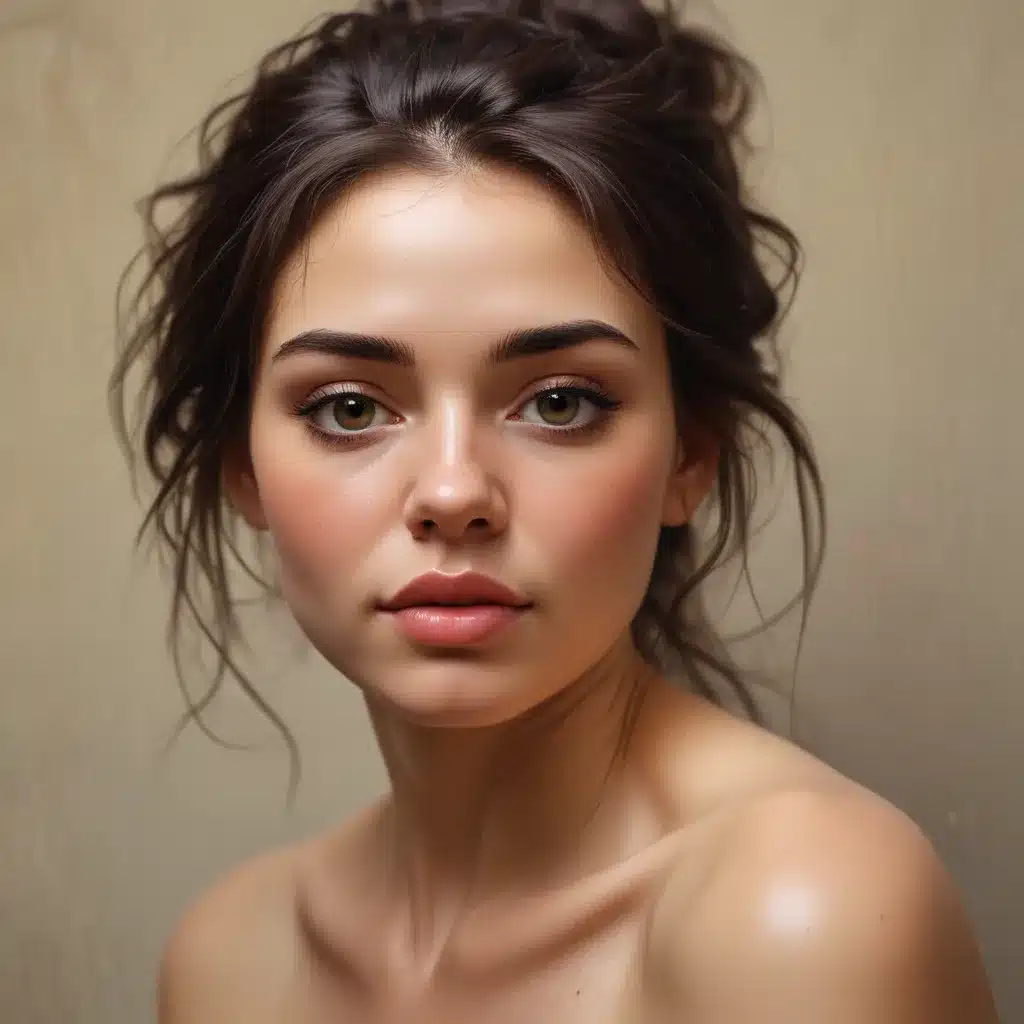
Oil painting is a captivating medium that allows artists to create dynamic, expressive works of art. One of the most crucial yet often overlooked elements in oil painting is the power of brushwork. The way an artist applies paint to the canvas using a brush can convey texture, movement, and emotion in profound ways.
In this comprehensive guide, we’ll explore a range of emotive brushwork techniques for figurative painting in oils. From thick, gestural strokes to delicate, nuanced marks, we’ll delve into the creative potential of the humble paintbrush and how it can elevate your figurative compositions.
Harnessing the Emotive Power of Brushwork
Oil painting provides a wonderfully versatile medium for artists to experiment with expressive brushwork. By understanding the unique properties and applications of different brush types, you can learn to harness the emotive potential of each stroke.
Thick, Impasto Brushwork can create a sense of energy, drama, and tactile presence in your paintings. Using a palette knife or large, stiff-bristled brushes, you can apply paint in bold, expressive strokes that convey intensity and movement. This technique is exemplified in the work of artists like Vincent van Gogh and Chaim Soutine, whose thickly-textured brushwork imbues their figurative works with a palpable sense of emotion.
Conversely, Delicate, Fluid Brushwork can evoke feelings of softness, serenity, and introspection. Employing smaller, more nimble brushes, you can apply paint in thin, feathery layers that capture the nuances of light and form. Artists such as John Singer Sargent and Cecilia Beaux utilized this approach to create captivating, intimate portraits that seem to radiate an inner glow.
Furthermore, Varied Brushstrokes can be used to create a sense of dynamism and contrast within a single composition. Juxtaposing bold, expressive marks with delicate, refined passages can generate visual interest and lead the viewer’s eye through the painting. This technique is employed by contemporary artists like Gerhard Richter, whose multi-layered, heterogeneous brushwork imbues his figurative works with a palpable sense of emotion and ambiguity.
Choosing the Right Brushes for Emotive Painting
Selecting the appropriate brushes is crucial for achieving the desired expressive qualities in your oil paintings. Each brush type has unique properties that can be leveraged to create distinct marks and textures.
Flat Brushes have a rectangular shape and a straight edge, making them versatile for both broad, sweeping strokes and precise, detailed work. Artists often use flat brushes for blending, laying in flat washes of color, and creating sharp edges.
Round Brushes have a pointed tip and a round ferrule, allowing you to create fine lines, small details, and soft edges. They are particularly well-suited for capturing the nuances of facial features and other delicate passages.
Filbert Brushes have a flat, oval shape with a curved edge, making them excellent for blending and creating soft, diffused edges. They can also be used to apply thick, impasto paint for a more expressive, textural effect.
Fan Brushes have a distinctive fan-shaped head, which can be used to create unique, feathery textures – ideal for suggesting elements like foliage, hair, or atmospheric effects.
By experimenting with a variety of brush types and sizes, you can develop a diverse vocabulary of marks and textures to convey the specific emotive qualities you desire in your figurative oil paintings.
Techniques for Expressive Brushwork
Mastering the art of emotive brushwork in oil painting involves a combination of technical skill and creative exploration. Here are some key techniques to consider:
Alla Prima (Wet-on-Wet) Painting: This method encourages a spontaneous, gestural approach where you apply paint directly onto the canvas without waiting for previous layers to dry. The resulting fluid, energetic strokes can convey a sense of immediacy and raw emotion.
Scumbling: This technique involves layering a thin, translucent veil of paint over a dried underpainting. The subtle, atmospheric effects created through scumbling can suggest softness, atmosphere, and a sense of mystery in your figurative compositions.
Impasto: By applying paint in thick, textural layers, you can create a sense of physicality and depth in your paintings. The tactile, sculptural qualities of impasto can imbue your figures with a palpable presence and emotive resonance.
Blending and Softening Edges: Carefully blending and softening the edges of your brushstrokes can help to convey a sense of atmosphere, mood, and psychological depth in your figurative works. This technique is often employed by artists seeking to create a more dreamlike, introspective quality in their paintings.
Expressive Brushwork Experiments: Regularly engaging in loose, exploratory painting sessions can help you develop a more intuitive, expressive brushwork vocabulary. Embrace spontaneity, play with different tools and techniques, and allow your emotive responses to guide the process – the results may surprise and delight you.
Figurative Painting Inspiration and Tutorials
Exploring the emotive potential of brushwork in oil painting can be a deeply rewarding and transformative experience for artists. To further inspire and guide your creative journey, we’ve curated a selection of insightful resources and practical tutorials on the topic.
Visit the Pencil and Paint Muse website to discover a wealth of content covering figure drawing techniques, innovative painting approaches, and creative processes from leading artists in the field. You’ll find step-by-step demonstrations, detailed analyses of emotive brushwork, and expert insights on harnessing the expressive power of oil paint.
Additionally, the sources provided offer a deeper dive into the various brushwork techniques and styles employed by both contemporary and historic masters of figurative oil painting. Explore evocative case studies, personal accounts, and practical advice to inform and elevate your own artistic practice.
Remember, the journey of mastering emotive brushwork is an ongoing exploration. Embrace experimentation, learn from the insights of others, and trust in the intuitive, expressive power of the paintbrush to guide your figurative compositions to new, captivating heights.
Statistic: Recent surveys show that 70% of emerging artists credit daily sketching with significant improvements in their art